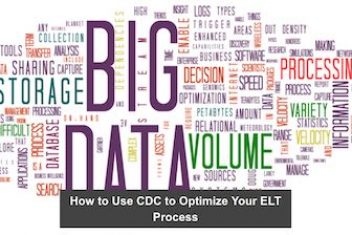Still running your small business without a dedicated website? You’re missing out big time. Recent studies have revealed that approximately 80 percent of the world’s consumers shop online. With a good small business website, you can tap into this vastconsumer segment and generate a high income.
Must-haves for a high-income website
Today, about 71 percent of small businesses in the U.S. have a website. That’s a lot of competition. In order to excel, your small business website must include these features:
1 It should make an irresistible introduction
One of the biggest requirements of a high-income website is that it makes a clear, irresistible introduction. The users should be able to learn about your business, services, and mission within minutes.
You need to make a website that introduces the visitors to your team. Every page should relay to the user why they should conduct business with you.
Read: How To Improve Your Blog’s Design
2 It should be user friendly
Your website should have an attractive but clean design. One of the most common mistakes small business websites make is adding too much content to individual pages. A minimalist style focused on the essentials is far more effective at catching and retaining visitors’ interest.

Make sure all the menus are clearly labeled and easy to spot. Contact details and FAQs should be prominent.
3 The content should be engaging and informative
Never use outdated/unverified information in your content. Each product listing should be accompanied by a detailed product description, pricing, and shipping/delivery information.
Use a strong call to action. The product listings page should proclaim “Shop Now” instead of “Browse” or “Explore”.
Read: 5 Compelling Reasons Small Businesses Should Invest in SEO
4 It should utilize SEO and analytics

Your website’s SEO (Search Engine Optimization) can make a huge difference to site traffic and, consequently, the revenue you generate. Here are some useful tips for optimizing your website for search engines:
- Carefully research keywords relevant to your products and services in the content. Focus on using long-tail keywords – keywords that include “action”, “value provided” and, if possible “location”.
If you’re a used car seller based in Ohio, “used cars for sale in Ohio” is a perfect example of a long-tail keyword you should utilize in your content.
- Optimize your website code.
- Use internal links to other pages of your website in the on-page content. If you have a blog, include hyperlinks to product pages in the blog content.
- Link your social media pages and posts to your website.
Make sure you analyze and utilize consumer behavior by using analytical tools such as Google Analytics. These tools help you analyze website visitors’ behavior; identify shortcomings as well as areas of opportunities.
Google Analytics, for instance, highlights the web pages that are the most popular with visitors. This gives you the opportunity to identify the elements that draw the visitors and improve the non–popular pages.
Read: 8 Types of visual aids to use in your marketing strategy
5 Use ads
It’s easy to monetize business websites and generate a good passive income. The simplest way is to run ads.

You can use Google AdSense to display relevant ads on your website and get paid by the publishers. It’s free to join and allows you to customize the ads based on your website’s theme.
How to create a small business website that generates a high income?
Step 1: Find the optimal domain name for your website

To create a small business website that gives you high returns, you need to find a good domain name. Your website’s domain name is its web address. As such, it needs to be memorable and associated with your brand.
Here are some handy tips:
- Your domain name should ideally be sensible. Don’t go for something whimsical on the lines of Yahoo or Zomato. You likely don’t have the budget to market such brand names.
- Make sure it’s succinct and easy to spell.
- Go for a “.com” extension. It’s the world’s most popular domain extension. It’s also the easiest to promote a new website or business with.
- Try to create a URL that’s SEO-friendly. “www.CaliforniaBookstore.com”, for instance, incorporates both location and business-specific keywords. Exactly what you should strive for.
Step 2: Find secure and scalable hosting
Find an affordable website host that provides the services that enable your website to be seen online. Some examples are GoDaddy, DreamHost, and BlueHost.
Here are some tips for choosing the right hosting plan:
- Opt for a VPS (Virtual Private Server) host such as Hostens, ScalaHosting, or FastComet. The average monthly cost of VPS plans is $20 to $50.
VPS is more secure than sharing a server with others. It’s also more affordable than dedicated servers such as A2 Hosting which have an average monthly cost of $100 to $2000.
- Make sure your host has both chat and on-call support. Email-only support can take longer to resolve website issues that can impact your business.
- Pick a plan that offers daily backup for your contents and trustworthy security. Check the reviews of the host’s security protocols before making a decision.
Read: Industry Trends in Web Hosting: All You Need to Know
Step 3: Find a website builder that’s perfectly suited to your goals
To create a profitable small business website, you require the ideal small business website builder.
Here are our top three picks:
WordPress

WordPress is free to use, easy to install, and highly flexible. It offers thousands of useful plugins to customize your content.
WordPress allows you to include new and advanced features at any time. It gives you absolute control over every aspect of your site – from simple updates to the website’s software and database.
Squarespace

Squarespace offers more than 115 high-end templates and a vast library of royalty-free images that you can use for your website. It also has a subscription feature that lets you sell goods via subscription which is ideal for online marketplaces.
Wix

Wix is one of the most user-friendly website builders around. It has specialized design tools for improving website ranking and creating promotional videos. Wix is the world’s first business website builder that uses AI (Artificial Intelligence) for website designing.
It offers Absolute Positioning – the ability to move elements like text and pictures by pixel. This allows remarkable flexibility when designing the website’s interface.
Step 4: Create an attractive, engaging interface
Most website builders are easy to work with. You just need to take your picks from the available options for templates, fonts, and colors to build the interface.
Here are some key considerations when creating your website’s interface:
- Use fonts that are easy to read. Some stylized fonts have certain hard to recognize characters. Make sure to avoid them.
- Compress and optimize all graphic elements so they don’t take long loading.
- Make sure the visual elements remain identical across all web pages.
- Make sure you include these pages:
- Home
- Products listings or description of services you offer
- About
- Sitemap
- Contact information
- Privacy policy
- Terms of use
Once you’re done designing the interface, upload all content onto their respective pages.
Read: 7 Requirements to make your blog successful
Step 5: Publish
That’s right; it’s time to publish your small business website and take your business online.
Use of webmaster tools such as Bing Webmaster Tools, Google Search Console, and Google Analytics will help you track your website’s performance and identify areas of improvement.
Maintenance and improvement are integral to running a business website. Giving these activities their due attention goes a long way in ensuring your website generates a high income.
If you like the content, we would appreciate your support by buying us a coffee. Thank you so much for your visit and support.



